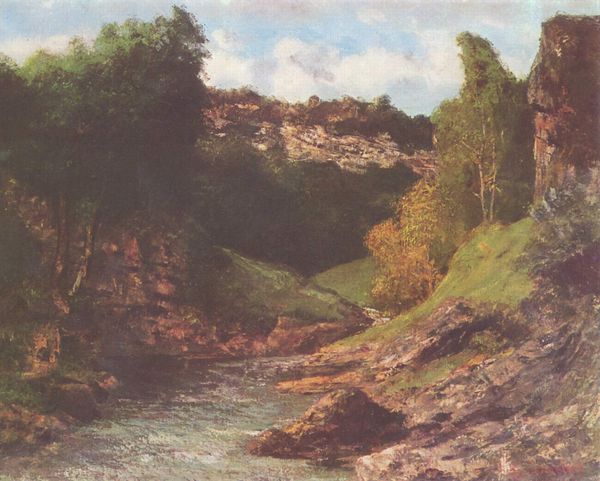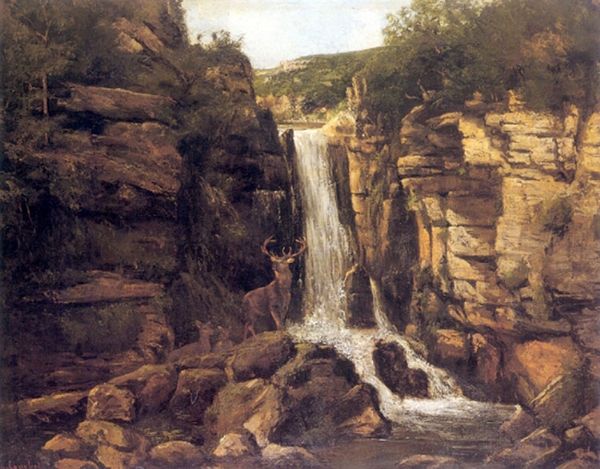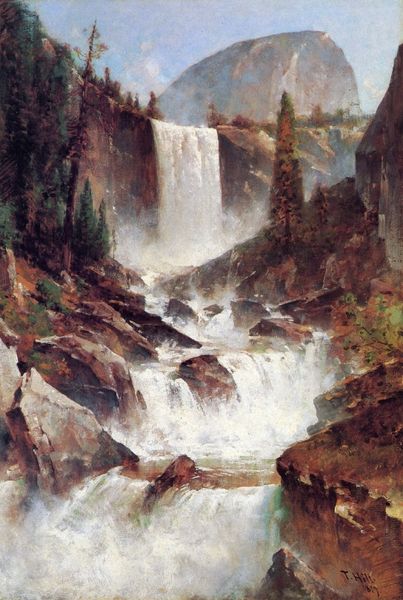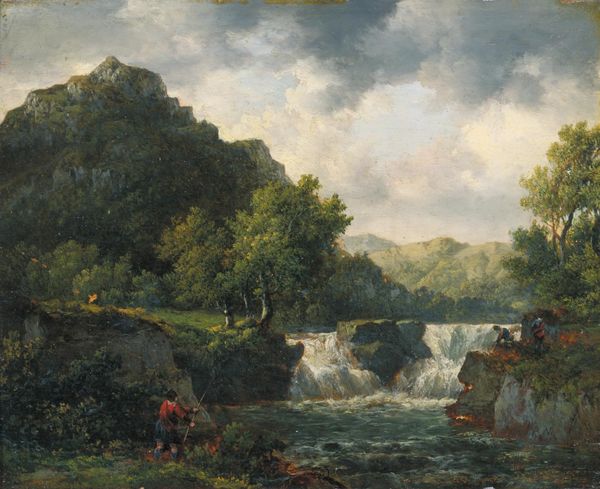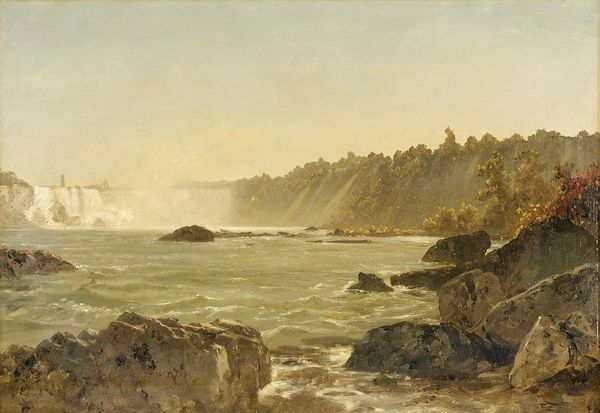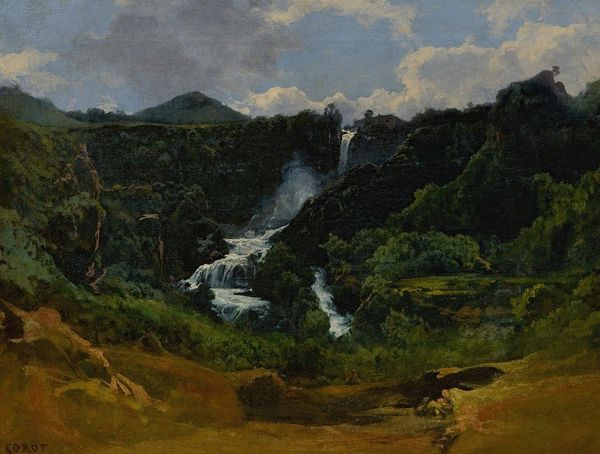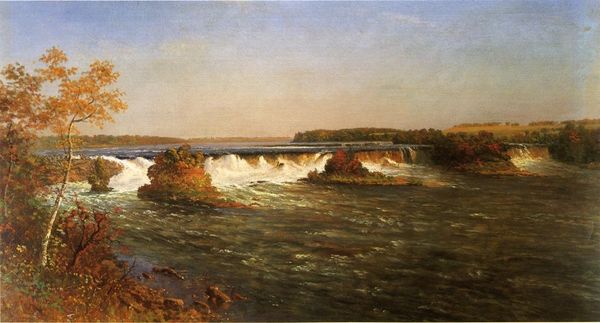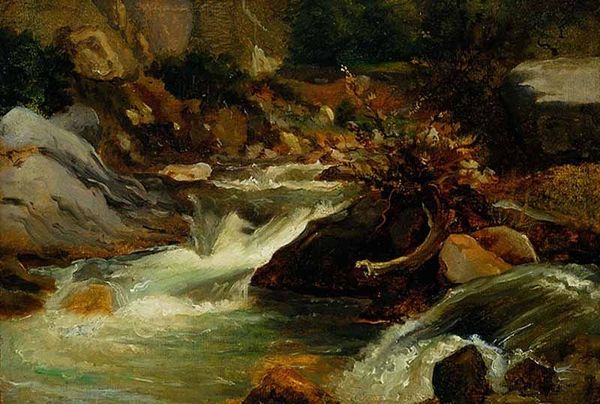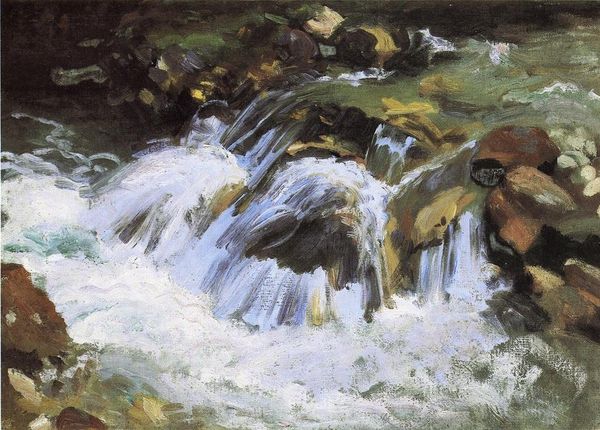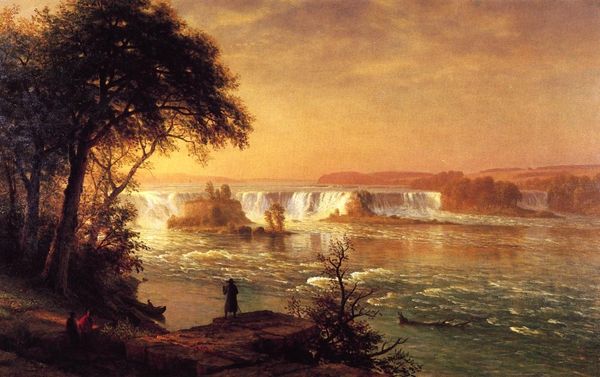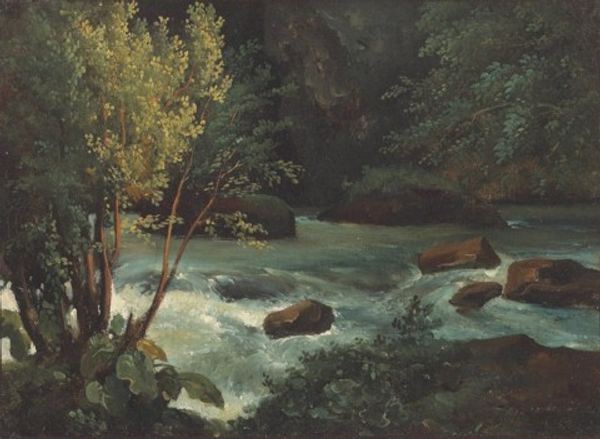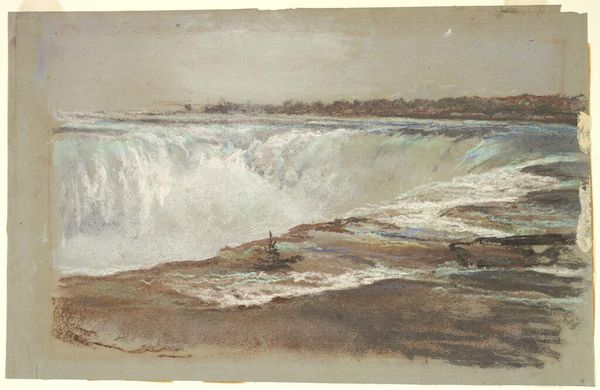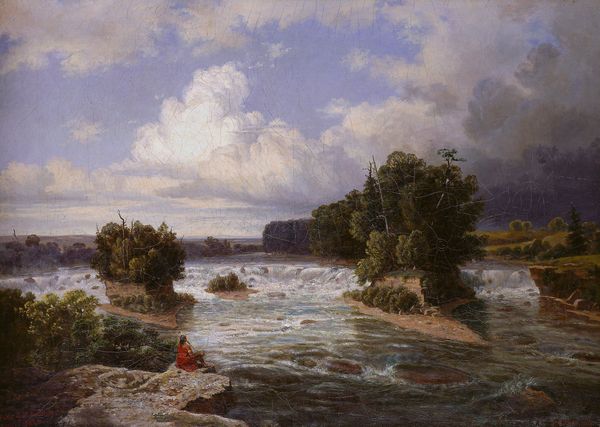
painting, plein-air, oil-paint
#
painting
#
impressionism
#
plein-air
#
oil-paint
#
landscape
#
impressionist landscape
#
oil painting
Copyright: Public domain
Curator: What a gorgeous depiction of leisure and the natural world. This is “Salto de Itu” by Jose Ferraz de Almeida Junior, created in 1886. Editor: My eyes are immediately drawn to the dynamism of the waterfall and the rapids. The water feels incredibly lively—almost as if it’s churning right before me. Curator: The painting reflects a broader interest in landscapes within Brazilian art during the late 19th century. The rapids and natural landscape here stand in contrast to urban life that was increasing due to growing industrialization in Sāo Paulo at the time. Editor: And, in formal terms, consider the use of light. Notice how it hits the water and those mossy rocks to the left. The light imbues those sections with energy and makes them pop from the backdrop, in particular, the cascading foam. It brings focus to the interplay between solidity and fluidity, structure and flow. Curator: This river space provided the opportunity for leisure to Brazil's growing middle class. A picnic at the falls provided a refuge away from the urban bustle while also signifying how much leisure activities were increasing in importance for society and class status at the time. Editor: Right, there are visible figures scattered about the shoreline. Some are grouped in obvious conversation. Others are simply there to witness the falls with us. What intrigues me most, however, is how the dark rocks are set against the bright falls. It establishes contrast, directing the viewer's eye. It's very cleverly laid out. Curator: What's also so striking is the work’s ability to capture the natural beauty of Brazil but also how society interacted with the land at that time. We’re given this idealized snapshot into a specific class’ leisure. Editor: On close inspection, it reveals an understanding of nature's textures, particularly the smooth water as it cuts across the rough textures of the land and rock, an intelligent dance between light and dark, surface and depth. Well, a satisfying painting! Curator: Indeed. It gives us much to consider, not just in its inherent artistry but also in what it says about leisure and class in 19th-century Brazil.
Comments
No comments
Be the first to comment and join the conversation on the ultimate creative platform.
